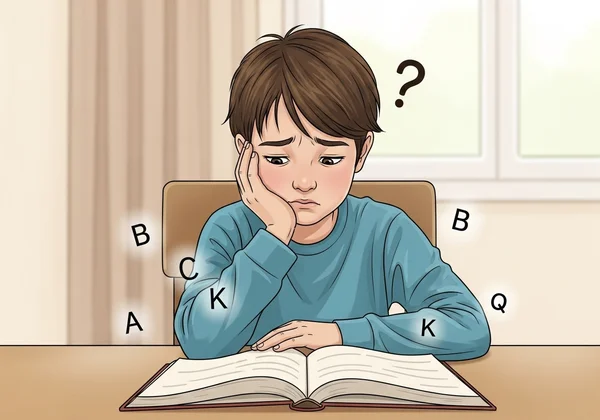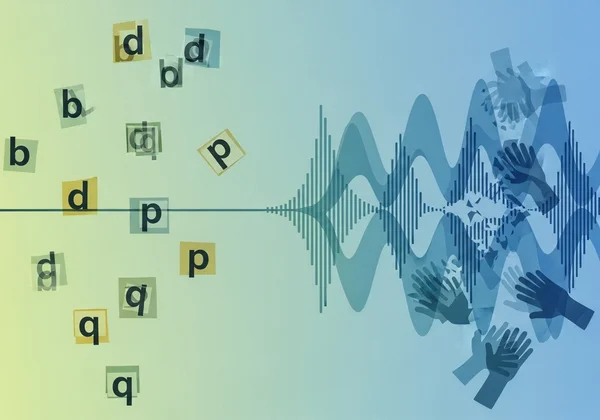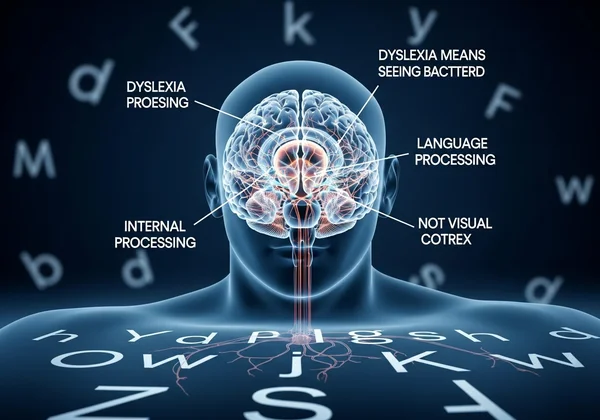Dyslexia Signs in Elementary Schoolers: Free Online Dyslexia Test & Myths Debunked
Watching your child struggle with reading can be a deeply concerning experience for any parent or educator. You see their brightness and curiosity, yet the bridge between letters on a page and the stories they hold seems difficult to cross. Many parents in this situation wonder if these dyslexia signs point to something more than just a slow start. How to test for dyslexia? This question often arises from a desire to understand and help. In this guide, we'll explore the common signs of dyslexia in elementary school children (ages 6-10) and clear up the persistent myths that can cause confusion and anxiety. Understanding is the first step, and with the right information, you can empower your child to unlock their full reading potential. For initial clarity, you can start a free dyslexia screening with a reliable screening tool.
Recognizing Common Dyslexia Signs in Elementary Schoolers (Ages 6-10)
Identifying potential dyslexia isn't about looking for a single symptom, but rather a pattern of challenges related to language processing. These signs can evolve as a child moves through elementary school, but the underlying difficulties often remain consistent. It’s important to remember that many children may show one or two of these signs occasionally; the key is a persistent pattern of difficulty.

Understanding Early Reading Struggles: More Than Just "Late Blooming"
It's a common hope that a child is simply a "late bloomer" who will catch up on their own. While this is sometimes true, persistent early reading struggles can be an indicator of an underlying learning difference like dyslexia. Unlike typical developmental delays, dyslexia is rooted in the brain's language processing centers. A core difficulty often lies in phonological awareness—the ability to recognize and manipulate the sounds in spoken language. This isn't about intelligence; in fact, many individuals with dyslexia have average or above-average intelligence.
Specific Indicators in Reading, Writing, & Spelling for Ages 6-8
In the early elementary years, as formal reading instruction begins, the signs of dyslexia can become more apparent. If you're wondering about 7-year-old dyslexia, this is a critical age for observation. Here are some specific indicators to watch for:
-
Difficulty with Phonological Awareness: Struggling to recognize rhyming words (like cat, hat, and bat), or having trouble clapping out syllables in a name.
-
Challenges with Decoding: Trouble sounding out new words or associating letters with their correct sounds. They may guess at words based on the first letter or pictures.
-
Letter and Number Reversals: Persistently writing letters like 'b' for 'd' or the number '6' for '9' beyond the first grade.
-
Inconsistent Spelling: Spelling the same word differently on the same page (e.g., "sed," "sedd," and "said").
-
Slow, Choppy Reading: Reading aloud is often laborious and lacks fluency, even with familiar books.
-
Trouble Recalling Facts: Difficulty remembering sequences like the days of the week, the alphabet, or their address.

How Dyslexia Manifests in Older Elementary Students (Ages 9-10)
As academic demands increase, the signs of dyslexia can shift. While some of the earlier challenges might persist, new ones related to more complex tasks often emerge. Children may have developed coping mechanisms, but underlying reading comprehension issues can become more obvious. They might struggle to understand jokes, puns, or idioms.
At this stage, you might notice a child avoiding reading aloud, having significant trouble with spelling tests despite studying, or difficulty summarizing a story they just read. Their written work may lack organization and contain frequent grammatical errors. This is a crucial time to investigate further, as the gap between them and their peers can widen without proper support. A helpful starting point is an online dyslexia test designed for screening.
Beyond Academics: Emotional and Behavioral Signs to Watch For
The impact of dyslexia extends far beyond report cards. The daily frustration of struggling with a skill that seems to come easily to others can take a significant emotional toll. These learning differences can manifest as low self-esteem, anxiety (especially around school), or avoidance behaviors. A child might complain of stomachaches to get out of reading activities or be labeled the "class clown" to deflect from their academic challenges. Recognizing these emotional signs is just as important as identifying the academic ones, as they highlight the child's internal experience.
Debunking Common Dyslexia Myths for Parents & Educators
Misinformation about dyslexia is widespread and can be incredibly damaging. Dispelling these common dyslexia myths is essential for creating a supportive environment and ensuring children get the help they truly need. Knowledge empowers us to move past stigma and focus on effective strategies.
Myth: Dyslexia Means You See Letters Backwards
This is perhaps the most famous myth. While some young children with dyslexia do reverse letters, it's not the defining feature and is also common among all early learners. Dyslexia is not a problem with vision or visual processing in the way most people think. It's a language-based learning disability that affects how the brain processes written and spoken language. The issue is with mapping sounds to letters, not with seeing them incorrectly.

Myth: It's Just Laziness or Lack of Effort
This harmful misconception can crush a child's spirit. Children with dyslexia are often trying incredibly hard—frequently, much harder than their peers. The neurological basis of dyslexia means their brains are simply wired differently for processing language. Labeling their struggle as laziness overlooks the real, underlying challenge and can prevent them from receiving the support and accommodations they need to succeed.
Myth: Children Will Simply "Outgrow" Dyslexia
Dyslexia is a lifelong condition; it does not disappear over time. However, this is not a reason for despair. With early intervention and the right support strategies, individuals with dyslexia can learn to read and write proficiently and lead highly successful lives. Ignoring the signs and hoping a child will "outgrow" them is a missed opportunity to provide critical support when it's most effective. This is why a preliminary dyslexia screening can be so valuable in identifying potential risks early on.
Empowering Your Child's Reading Journey: What Comes Next?
Understanding the signs of dyslexia and separating fact from fiction are powerful first steps on the path to supporting your child. You are their greatest advocate, and by equipping yourself with knowledge, you can change the trajectory of their learning journey from one of frustration to one of empowerment. You've learned what to look for and what to ignore, and now you can take meaningful action.
Your next step is to gather more specific insights into your child's unique learning profile. You can begin this process right now, from the comfort of your own home. Start our free dyslexia test today to get immediate, confidential insights into your child's reading strengths and challenges. This professional screening test, designed by experts, provides a risk assessment and personalized recommendations to guide your next steps.

Frequently Asked Questions About Dyslexia Signs in Children
What are the signs of dyslexia in a 7-year-old?
For a 7-year-old, key signs often include significant difficulty sounding out words, confusing letters like 'b' and 'd', trouble remembering sight words, and slow, effortful reading. They may also struggle with rhyming and have very messy or inconsistent spelling.
Can schools test for dyslexia?
Schools can conduct educational evaluations to see if a child qualifies for special education services under categories like "Specific Learning Disability." However, they may not always use the term "dyslexia." A formal clinical diagnosis is typically done by a licensed psychologist or specialist outside of the school system.
Is an online dyslexia test accurate for screening?
Yes, a well-designed online dyslexia test is an accurate and highly effective tool for screening. It is crucial to understand the difference: a screening identifies potential risk, while a diagnosis confirms the condition. A tool like ours is an excellent, low-stress first step to determine if a formal evaluation is warranted. It provides valuable initial insights to help you start a conversation with educators and specialists. You can view your screening results in minutes.
How soon can dyslexia be identified in children?
Risk factors for dyslexia can be identified in children as young as preschool age. Early indicators include a family history of reading difficulties, delayed speech, or trouble learning the alphabet and rhymes. Formal screening, like the free online dyslexia test offered on this platform, can be done once a child begins formal reading instruction, typically around age 5 or 6, to allow for the earliest possible intervention.